India
Inauguration of India’s First Vertical Lift Sea Bridge by PM Modi in Tamil Nadu
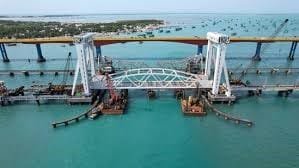
Contents
Introduction to the Vertical Lift Sea Bridge
The inauguration of India’s first vertical lift sea bridge marks a significant achievement in modern engineering and infrastructure development. A vertical lift sea bridge is a specialized type of bridge that can raise and lower its central span to accommodate passing vessels, thus improving maritime and vehicular traffic flow. This innovative design not only enhances navigability but also provides uninterrupted travel for road users, effectively bridging land and sea.
Constructed with advanced technology, the vertical lift mechanism allows the bridge to operate efficiently, raising a portion of the structure when needed. This is particularly advantageous in regions with busy waterways, as lift sea minimizes construction costs and time over traditional movable bridges. The engineering behind the vertical lift sea bridge draws on principles of hydraulics and structural integrity, ensuring safety and reliability for both vehicular traffic and marine navigation.
The significance of the vertical lift sea bridge extends beyond technological innovation; it symbolizes progress in transportation connectivity in India. By seamlessly connecting coastal areas with inland regions, lift sea infrastructure is expected to stimulate economic growth, enhance trade routes, and contribute to tourism in Tamil Nadu. Moreover, the bridge is strategically designed to withstand various environmental conditions, thereby ensuring longevity and reducing maintenance efforts.
Overall, the introduction of the vertical lift sea bridge represents a commitment to embracing modern solutions for transportation challenges in India. As this initiative aims to overhaul the existing infrastructural landscape, it is vital to recognize the potential implications for future projects. The bridge not only reflects advancements in engineering but also serves a greater purpose of enhancing connectivity and fostering regional development.
PM Modi’s Vision for Infrastructure Development
Prime Minister Narendra Modi has consistently articulated a vision for India that emphasizes robust infrastructure development as a crucial pillar for economic growth. His approach to infrastructure encompasses not only the construction of physical assets but also a strategic enhancement of the nation’s transport networks. The inauguration of India’s first vertical lift sea bridge in Tamil Nadu stands as a tangible embodiment of this vision and is indicative of a broader commitment to modernize and expand India’s infrastructure.
This vertical lift sea bridge is more than just an engineering marvel; it represents a significant advancement in connectivity for coastal regions, facilitating smoother transport of goods and people. With India’s economy showing signs of growth and resilience, the development of such projects aligns seamlessly with the government’s objective to bolster economic activity and foster regional development. The primary focus remains on projects that bridge gaps in infrastructure, particularly in underserved areas, thereby promoting equitable growth across diverse geographical locations.
Moreover, Prime Minister Modi’s infrastructure agenda is rooted in sustainability and innovation. The integration of advanced technology and environmentally friendly practices is a key aspect of this vision. By prioritizing projects that enhance transport efficiency while minimizing the ecological footprint, the government seeks to create a sustainable framework that will serve future generations. This holistic view of infrastructure development positions initiatives like the vertical lift sea bridge at the forefront of India’s quest for modernity, resilience, and economic prosperity.
The significance of this specific project extends beyond its immediate benefits; it acts as a catalyst for further investments in infrastructure. As India strives to position itself as a global economic powerhouse, the seamless integration of transport networks will be instrumental in supporting trade, enhancing tourism, and ultimately driving national growth. Through such developments, PM Modi’s vision continues to redefine the landscape of Indian infrastructure and set the stage for a prosperous future.
Details of the Vertical Lift Sea Bridge Project
The Vertical Lift Sea Bridge, inaugurated by Prime Minister Modi, is a remarkable engineering feat located in Tamil Nadu. Lift sea unprecedented structure aims to enhance connectivity and facilitate maritime and vehicular transportation. It spans over a waterway that serves as a crucial trade route, particularly for the movement of goods between the mainland and nearby islands. The strategic placement of the bridge is expected to significantly reduce travel time and improve logistics efficiency in the region.
Technically, the Vertical Lift Sea Bridge is designed to accommodate both road traffic and maritime navigation. The bridge features a lifting mechanism, allowing sections to rise and provide clearance for passing vessels, thus ensuring uninterrupted maritime operations. The engineering behind this structure reflects cutting-edge technology and innovative design, making it one of the most forward-thinking transport solutions in India. The bridge itself extends approximately 1,500 meters in length, with a width sufficient to carry multiple lanes of traffic safely.
The estimated cost of the project is around INR 2,000 crores, a significant investment indicating the government’s commitment to enhancing national infrastructure. Construction commenced two years ago and progressed rapidly, thanks in part to the involvement of renowned engineering firms specializing in large-scale infrastructure projects. These firms have contributed their expertise to ensure that the bridge meets international standards of safety and reliability.
Several key milestones have been achieved throughout the construction phase, including the completion of significant structural elements and the successful implementation of the lift mechanism’s testing procedures. This project not only aims to provide better traffic management but also serves as a model for future infrastructure developments across the country. The Vertical Lift Sea Bridge exemplifies India’s advancing capabilities in civil engineering and infrastructure, setting the stage for further innovation in transport solutions.
Cultural and Economic Impact on Tamil Nadu
The inauguration of India’s first vertical lift sea bridge is expected to have a profound impact on the economy and culture of Tamil Nadu. Improved connectivity through this infrastructure will significantly enhance trade opportunities, allowing for smoother and more efficient transportation of goods. As businesses gain easier access to markets, the potential for growth in local enterprises will increase, leading to job creation and enhancing the overall economic landscape of the region.
Furthermore, the vertical lift bridge can serve as a catalyst for tourism in Tamil Nadu. By providing reliable access to scenic coastal areas and cultural landmarks, it is likely to attract both domestic and international tourists. This influx of visitors can stimulate the local economy, supporting industries such as hospitality, restaurants, and artisans. Additionally, a boost in tourism can foster a renewed interest in preserving Tamil Nadu’s rich cultural heritage, contributing to the sustainability of local traditions and customs.
Moreover, it is crucial to recognize the importance of balancing economic development with ecological preservation. The construction and operation of the sea bridge must consider the environmental implications, ensuring that the local ecosystem and biodiversity are protected. Sustainable practices should be integrated into both the bridge’s design and operational management to minimize negative impacts on the marine environment and surrounding areas.
In this context, community engagement will play a significant role in ensuring that the benefits of the vertical lift sea bridge are realized while protecting local culture and ecology. Stakeholders must collaborate to promote responsible tourism and investment practices that respect the vibrant traditions of Tamil Nadu. By fostering a symbiotic relationship between cultural heritage and economic growth, the bridge can truly symbolize the progress and resilience of Tamil Nadu’s communities.
Comparative Projects: Vertical Lift Bridges Around the World
Vertical lift bridges represent a significant advancement in engineering, combining aesthetic appeal with functional performance. These structures allow for the passage of vessels beneath them, accommodating the needs of both vehicular and maritime traffic. Among the most notable examples is the Bernard L. Schwartz Bridge in the United States, which showcases a remarkable design allowing quick lift mechanisms that raise and lower the bridge deck efficiently. Its functionality is optimized for high traffic areas, exemplifying how such designs can enhance urban mobility.
Another prominent example is the Forth Road Bridge in Scotland, which, although primarily known as a suspension bridge, is often associated with vertical lift technology. It demonstrates the flexibility of lift systems in bridging diverse terrains, ensuring accessibility across both land and water. The robust engineering practices involved in its construction have set a benchmark for future bridge projects, influencing designs worldwide.
Additionally, the Detroit-Superior Bridge in Ohio features a unique vertical lift mechanism, allowing for significant clearance and adaptability. This particular bridge is noteworthy not only for its function but also for its historical importance and dual-use capabilities, where it accommodates both vehicular and pedestrian traffic. Such projects emphasize the functional versatility of vertical lift bridges and their vital role in urban infrastructure.
India’s first vertical lift sea bridge, inaugurated by PM Modi in Tamil Nadu, draws inspiration from these global examples. It aims to integrate similar functionalities while catering to the unique geographical and cultural context of the region. The comparative analysis of these projects reveals key design principles and engineering challenges that can enhance the planning and execution of vertical lift bridges worldwide. Ultimately, India’s venture into vertical lift bridge construction illustrates an impressive amalgamation of global engineering expertise and local requirements, promising both innovation and improved connectivity.
Challenges Faced During Construction
The construction of India’s first vertical lift sea bridge, inaugurated by Prime Minister Modi in Tamil Nadu, was not without its challenges. Numerous technical difficulties arose throughout the project, many of which were inherent to the innovative design and engineering required for such a structure. The vertical lift mechanism, intended to allow vessels to pass beneath the bridge, demanded intricate engineering solutions to ensure safety and reliability during operation. Engineers had to navigate complex hydraulic systems to achieve seamless movement, making this a particularly demanding aspect of construction.
In addition to technical challenges, environmental concerns played a significant role in the construction process. The bridge traverses a marine ecosystem that is home to various species of flora and fauna, necessitating extensive environmental assessments and mitigation measures. Construction activities had to comply with stringent regulations to minimize ecological disruption, which sometimes led to delays. These requirements emphasized the importance of sustaining local wildlife while advancing infrastructure development and brought additional challenges to the overall timeline of the project.
Community sentiment surrounding the project further complicated the construction process. While many local residents supported the development, seeing it as an opportunity to boost economic growth and improve connectivity, there were also pockets of public opposition. Concerns related to potential impacts on fishing zones and tourism were prominently raised at public forums. The government implemented outreach initiatives to engage with stakeholders, fostering a dialogue to openly address these concerns. Ultimately, balancing technical needs, environmental stewardship, and community interests proved to be a delicate endeavor that required ongoing communication and collaboration among all parties involved in the project.
Future Prospects and Innovations in Bridge Engineering
The inauguration of India’s first vertical lift sea bridge marks a significant milestone in the field of bridge engineering and signifies the potential for future advancements in this realm. As India looks toward modernizing its infrastructure, the successful implementation of innovative techniques seen in the vertical lift bridge can serve as a model for upcoming projects across the country. This advancement introduces various prospects that could transform the traditional practices in bridge construction.
One of the most notable innovations that can be integrated into future bridge designs is the incorporation of smart technology. By utilizing sensors and real-time monitoring systems, engineers can enhance the efficiency, safety, and longevity of bridges. These systems can provide vital data concerning structural health, traffic patterns, and environmental factors, enabling timely maintenance and reducing the risk of catastrophic failures. As India invests in smart city initiatives, such technological advancements in bridge engineering are likely to become increasingly imperative.
Moreover, the success of vertical lift bridges could pave the way for the design of more complex structures that assist in resolving geographical challenges, particularly in areas where traditional bridge forms are impractical. The versatility of these engineering solutions can potentially lead to the construction of adaptable structures that serve various purposes, from enhancing connectivity to promoting economic growth.
Additionally, focusing on sustainable design principles is crucial for the future of bridge engineering. Innovations such as eco-friendly materials and energy-efficient construction methods can be integrated into the design and construction phases. Emphasizing sustainability not only addresses the current environmental concerns but also aligns with global standards and regulations that demand reduced ecological footprints. As demonstrated by the vertical lift sea bridge, combining innovative engineering with sustainable practices can lead to the development of iconic infrastructures that serve present and future generations.
Public Response and Reactions to the Inauguration
The inauguration of India’s first vertical lift sea bridge by Prime Minister Modi in Tamil Nadu has sparked significant public interest and various reactions from different sectors of society. Media coverage has been extensive, with numerous outlets highlighting the historical significance of the bridge as a landmark achievement in infrastructure development. The event was adorned with a sense of pride and optimism, symbolizing progress in connectivity and engineering capabilities in India.
Local officials have expressed overwhelming support for the project, conveying their excitement about how the bridge will facilitate transportation and promote economic growth in the region. Government representatives emphasized that the vertical lift sea bridge represents modernity, aligning with India’s vision of advancing its infrastructure to ease the movement of goods and people. They anticipate that this development will attract more tourists and create job opportunities, ultimately uplifting the local economy.
Also read : Inauguration of the Indian Ocean Ship Sagar at Karwar Naval Base: A Strategic Milestone
Citizens’ sentiments reflect a mixture of pride and admiration for this infrastructural feat. Many have taken to social media platforms to share their thoughts, with posts celebrating the bridge as not just a physical structure but a symbol of strength, resilience, and innovation in India. Others refer to the project as a step towards bridge-building—not only in the figurative sense of connecting different locations but also in uniting communities and fostering national pride.
However, some responses have included concerns about the environmental impact of such large-scale projects. Environmental advocates urge the government to consider sustainability while progressing with infrastructure enhancements. Overall, the inauguration of the vertical lift sea bridge has prompted a palpable sense of enthusiasm and hope, intertwining aspirations for a better future with the realization of engineering marvels that redefine travel and transport in India.
Summary and Invitation to the Future
The inauguration of India’s first vertical lift sea bridge by Prime Minister Modi marks a significant milestone in the nation’s engineering and infrastructure landscape. This project not only enhances connectivity but also symbolizes India’s commitment to innovative infrastructure development. The vertical lift mechanism presents a remarkable achievement in engineering, showcasing the nation’s ability to meet modern demands while accommodating the needs of maritime traffic.
Also read :
As we reflect on the importance of this bridge, it becomes clear that it serves more than just a functional purpose. It stands as a testament to the potential of modern engineering in addressing the challenges posed by geographical and logistical constraints. The bridge is poised to facilitate economic growth and improve accessibility for communities, ushering in a new era of travel and trade along the coastal regions of Tamil Nadu.
Looking forward, this project invites us to consider the broader implications of such infrastructure endeavors for India’s future. The success of the vertical lift sea bridge may inspire similar initiatives across the country, promoting the integration of advanced engineering techniques to enhance connectivity and cater to the needs of a growing population. This reflects a sustained vision for India’s development trajectory, emphasizing innovation and modernization.
Moreover, the bridge stands as a beacon for future generations of engineers and infrastructure specialists. It encourages young minds to think creatively and push the boundaries of what is achievable in the field. The possibilities for Indian engineering are vast, and this project serves as a launching pad for ambitious aspirations that can lead to transformative changes across various sectors.
In conclusion, as we embrace this remarkable milestone, let us remain optimistic about the future of Indian infrastructure development, anticipating new projects that will continue to enhance the quality of life for citizens and drive the country’s economic progress.
Accident
Vadodara Bridge Tragedy: Death Toll Rises to 19, Two Still Missing – Rescue Operations Continue in Mahisagar River
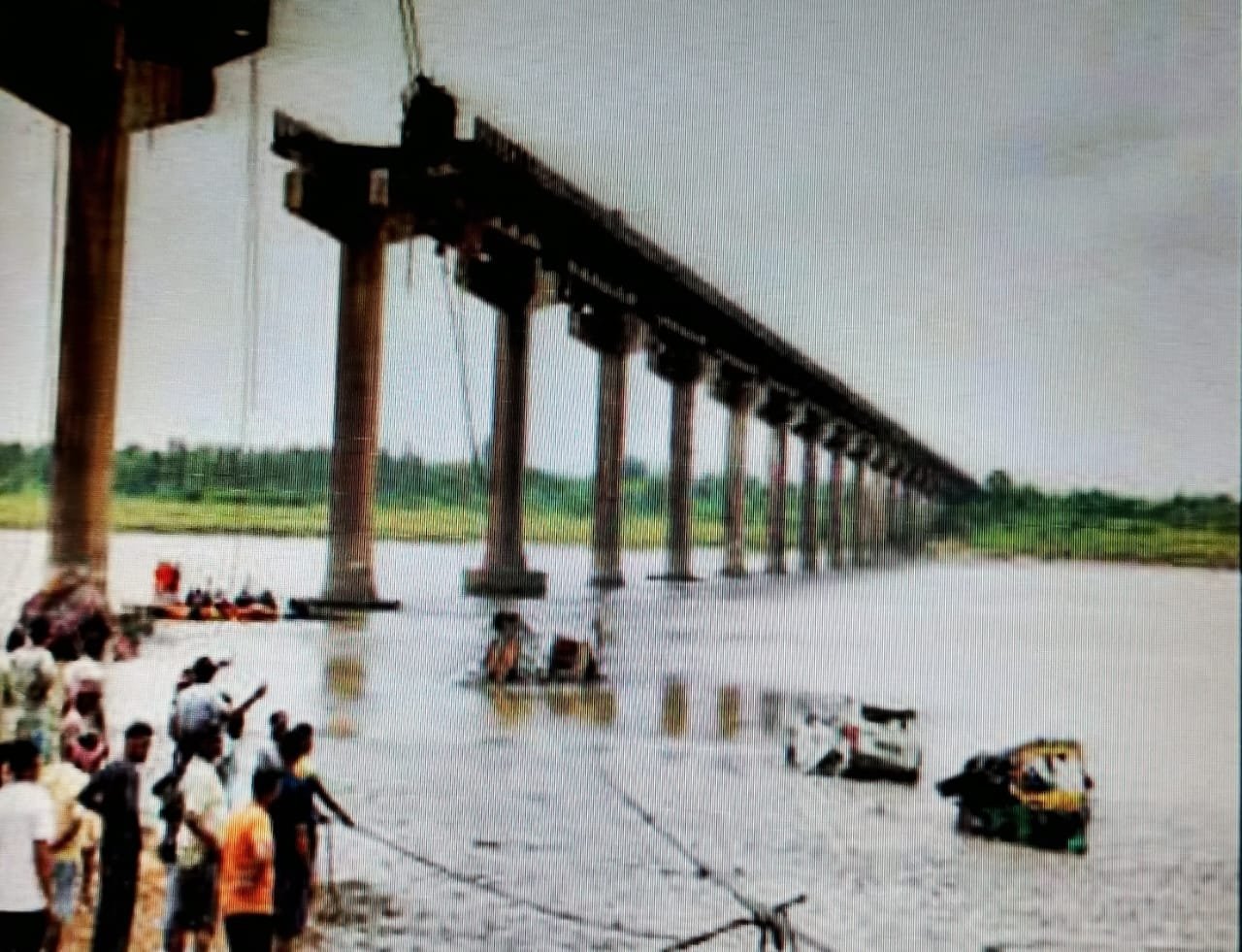
Contents
Vadodara (Gujarat), July 11, 2025
A heart-wrenching incident has shaken Gujarat as the Gambhira–Mujpur bridge over the Mahisagar River in Vadodara district collapsed unexpectedly. So far, 19 people have lost their lives, while 2 individuals remain missing. Rescue teams have been relentlessly working for the third consecutive day in the hope of saving lives and retrieving the missing.
How Did the Tragedy Happen?
The incident occurred on the morning of July 9, when several vehicles were crossing the bridge. Suddenly, a major section of the bridge collapsed into the river, dragging with it two trucks, an SUV, a pickup van, an auto-rickshaw, and two motorcycles. The bridge was nearly 40 years old, and multiple complaints had been made about its deteriorating condition.
Victims Identified, Families Devastated
So far, 18 bodies have been recovered from the debris, while one critically injured person succumbed to injuries at the hospital, taking the total death toll to 19. Among the victims were women, children, and entire families who were out on a pilgrimage for Guru Purnima.
Search Operations Still Underway
Rescue efforts by NDRF, SDRF, and fire brigade teams are still ongoing. The operation is facing major challenges due to the river’s depth, strong current, and over 10 feet of thick mud, making it difficult to access submerged vehicles. Cranes, boats, and divers are being deployed to find the two missing persons.
Government Response and Action
In the wake of the incident, the state government swiftly suspended four engineers and has ordered a detailed investigation into the bridge collapse. The government has also announced financial compensation of ₹2 lakh to the families of the deceased and ₹50,000 for the injured.
Public Outrage and Unanswered Questions
Local residents claim the bridge was already in a dangerous condition, but authorities failed to take timely action. Media reports reveal that just days before the tragedy, a journalist had posted a video highlighting the poor state of the bridge, which went ignored.
This incident has once again exposed the negligence and oversight in maintaining public infrastructure. Behind every number is a grieving family – a shattered home, a mother who lost her child, a father never to return. The need of the hour is strict accountability, immediate structural audits, and long-term corrective measures — so that such a tragedy never repeats itself.
Education
Guru Purnima Celebration at DAV CPS, Jaipur – A Heartfelt Tribute to Guiding Lights
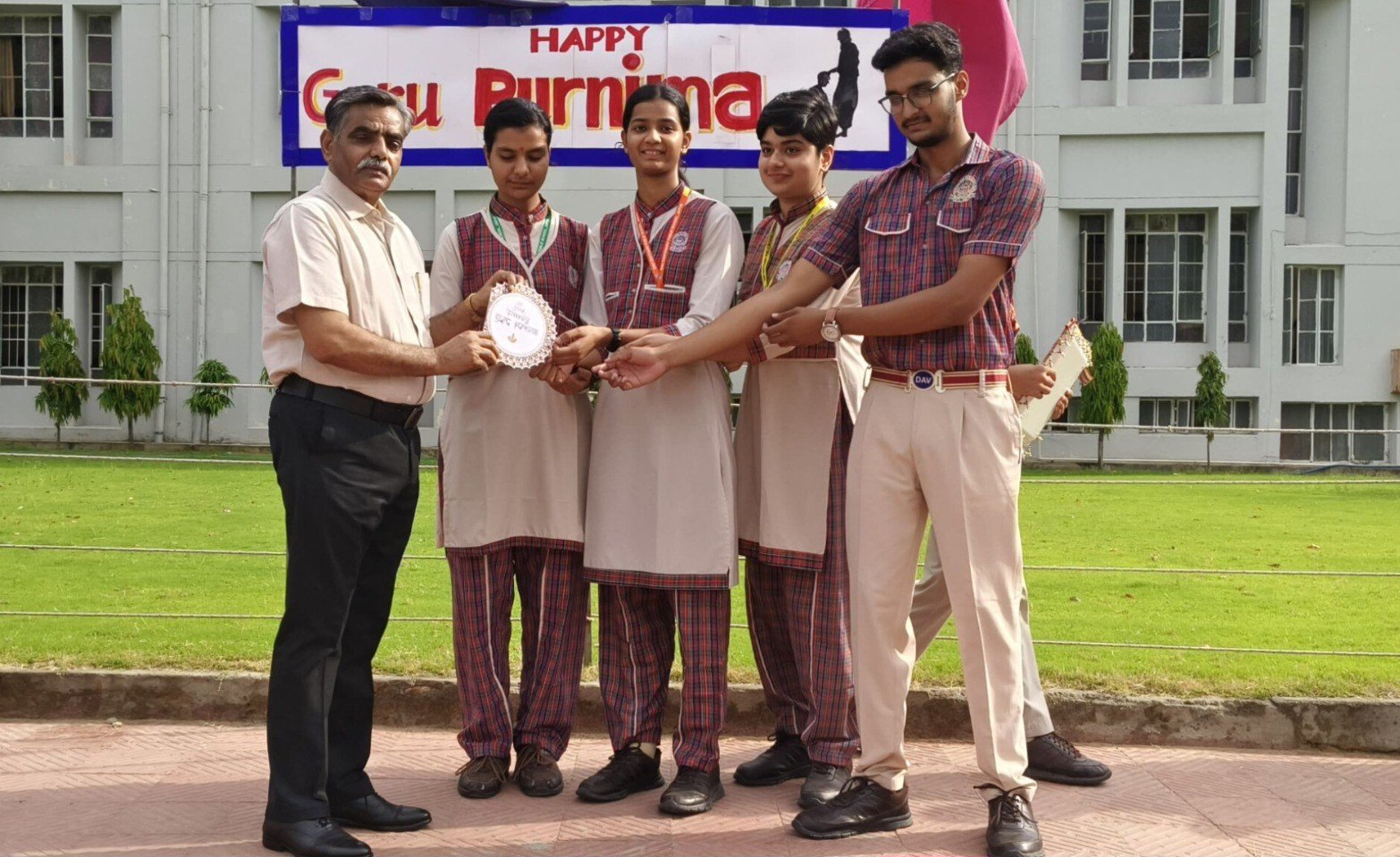
Jaipur | July 10, 2025
In an atmosphere filled with devotion, gratitude, and inspiration, DAV Centenary Public School, Vaishali Nagar, Jaipur celebrated Guru Purnima with heartfelt enthusiasm on Thursday, July 10. The event turned out to be more than just a celebration—it was a beautiful expression of love and respect for the teachers who illuminate the path of learning for their students.
The morning assembly set the tone for the day with the soothing sounds of shlokas dedicated to gurus, creating a spiritually charged environment across the campus. The essence of the celebration was beautifully captured in a speech that explained the cultural and historical roots of Guru Purnima, reminding everyone of the powerful legacy of the guru-shishya tradition.
Students poured their hearts out through soulful poems, melodious songs, and inspiring speeches, each echoing a shared sentiment—deep respect for their mentors. A mesmerizing classical dance performance, portraying devotion and reverence towards gurus, stole the spotlight and left the audience spellbound.
One of the most touching moments of the day was when the students presented a handmade gratitude card to Principal Mr. A.K. Sharma, who has been a constant source of wisdom and encouragement. In his address, Mr. Sharma reflected on the irreplaceable role of teachers in shaping young minds and urged students to stay rooted in values, discipline, and lifelong learning.
“The presence of a guru in one’s life is a blessing,” he said. “True success comes not just from knowledge, but from the humility to keep learning.”
The event concluded on a thoughtful note, leaving everyone—teachers, students, and staff—feeling more connected, more thankful, and more inspired. Guru Purnima at DAV CPS was not just an event, but an experience that reminded all of the timeless role of a teacher—not just in the classroom, but in life.
Crime
Indian Nurse to Be Hanged in 6 Days in Yemen — The Heartbreaking Story of Nimisha Priya, Who Gave Her Partner a Sedative That Turned Deadly

Contents
Thiruvananthapuram / Yemen | July11, 2025
Once a hopeful young nurse from Kerala, Nimisha Priya is now counting her final days in a Yemeni prison. Her crime — administering a sedative that led to the death of her Yemeni business partner, Alkhader Al-Omari. Her punishment — execution by hanging on July 13, 2025.
But behind this grim sentence lies a story much more complicated — one filled with ambition, control, fear, and a moment that changed everything.
A Nurse with Dreams, and a New Life Abroad
Nimisha Priya wasn’t a criminal when she left India. She was a caregiver — a skilled nurse with dreams of building a better life. In Yemen, she found work, opened a clinic, and partnered with Alkhader Al-Omari, a local man who helped her navigate the foreign land.
But what started as a partnership slowly turned into a prison.
Trapped in a Toxic Relationship
Reports from the time suggest that Al-Omari soon took control of more than just the clinic. He allegedly confiscated Nimisha’s passport, isolated her, and began mentally and physically abusing her. He took over her earnings and threatened her when she talked about returning home to India.
Far from family, friends, or legal protection, Nimisha felt completely trapped — her life and freedom in the hands of a man who, she believed, would never let her go.
The Night It All Changed
Then came that fateful night in 2017.
According to court documents, Nimisha gave Al-Omari a high dose of a sedative. Her stated intention was not to kill him, but to make him unconscious, retrieve her passport, and escape. But the sedative proved too strong — Al-Omari died.
Panic set in. Nimisha reportedly dismembered his body and tried to hide the evidence in a water tank. A gruesome and desperate act that, once discovered, left her no room to explain.
A Death Sentence, and a Race Against Time
The Yemeni court ruled the act pre-meditated murder and sentenced Nimisha to death by hanging.
For years, legal teams in India and Yemen pleaded for clemency. Activists pointed to the abuse she suffered, to the desperation of a woman with no escape, and to her otherwise clean record. Her mother, in tears, begged the Yemeni family for forgiveness, hoping for a “Diya” — blood money — a custom in Yemen that allows the victim’s family to pardon the accused.
But that pardon never came.
Only Six Days Left…
Today, Nimisha Priya is a prisoner not just behind bars, but in time. With just six days left, she awaits her execution. Her mother is still trying — hoping against hope — for one final miracle.
Meanwhile, millions in India are asking:
Was she a murderer? Or a victim of circumstance, trying to survive in a world where no one came to help?
Beyond the Verdict
This is not just Nimisha’s story. It’s the story of thousands of Indian women who work abroad, often with little protection. It’s the story of how desperation can drive someone to the edge, and how the law — especially in foreign lands — rarely leaves room for the grey in between.
Crime
India’s Biggest Scam You Never Heard Enough About — ₹49,000 Crore Vanished, 5 Crore Lives Shattered, And Now… One Big Arrest

Contents
Lucknow | July 11, 2025
In what could be one of the biggest financial frauds in India’s history, the curtain has finally started to lift. The Uttar Pradesh Economic Offences Wing (EOW) has arrested Gurnam Singh (69) — the key director behind Pearls Agrotech Corporation Ltd (PACL) — from Punjab’s Ropar district.
His crime? Allegedly orchestrating a ₹49,000 crore Ponzi scheme that duped nearly 5 crore investors across India.
This wasn’t just about money. It was about dreams sold and lives broken — mostly belonging to farmers, small shopkeepers, daily wage workers, and middle-class families who trusted PACL with their hard-earned savings.
The Dream That Turned Into a Trap
PACL promised affordable land investments. The plan sounded simple — invest now, and in a few years, you’d either get a valuable land parcel or high returns.
But behind the glittering promises lay a hollow scam.
No land. No returns. Just a web of false paperwork and delayed answers — until one day, even those stopped.
EOW’s New Face — Tough, Accountable, and On a Mission
What’s changed now? The UP EOW has introduced a “Reward and Punish” system to fast-track major financial crime probes like this:
- Monthly performance tracking of officers
- Fast-track teams deployed in every district
- Seizure of properties under Section 111 of the new BNS law
- Helplines, awareness drives, and social media alerts for public support
This new system has already led to 14 arrests, including key names linked to the ₹250 crore V-Care scam and this massive PACL fraud.
This Isn’t Just About Money — It’s About Betrayal
One woman investor said it best:
“We saved for our children’s education, for their future. Now we run around courts and collector offices, with nothing to show for it.”
Behind every number in this scam — there’s a family. A broken promise. A shattered future.
The Bigger Picture
This arrest proves one thing: Justice may be slow, but it’s not blind. ₹49,000 crore didn’t just disappear — it was siphoned off through trust and illusion. The real question now is:
Will India’s legal system bring back justice and money for 5 crore defrauded citizens? Or will this case too fade into the dust of files and forgotten hearings?
India
India Crosses 1.46 Billion — But Why Are People Having Fewer Children? UN Report Reveals the Changing Math of Population

Contents
New Delhi | July11, 2025
There was a time when India’s growing population was considered the country’s biggest problem. Slogans like “Hum Do, Hamare Do” (We Two, Our Two) echoed across walls and radio channels. But times have changed — and so has the narrative.
According to the latest report by the United Nations, India’s population has officially crossed 1.46 billion, making it the most populous nation on the planet. But what’s surprising is this: India’s fertility rate — the number of children a woman has — is steadily declining.
Today, the average Indian woman is giving birth to just two children, which is right around the replacement level needed to maintain a stable population.
So, if fewer children are being born, why is the population still rising? What’s really happening behind these numbers?
This Isn’t Just About Statistics — It’s a Social Shift
There was a time when India was labelled a “population bomb.” Now, several Indian states — including Kerala, Delhi, Tamil Nadu, Karnataka, and Punjab — have fertility rates below replacement level.
This isn’t happening due to force or law — but through education, awareness, and personal choice. It’s a quiet revolution led by society itself.
India is now slowly moving towards population stability, something once thought to be decades away.
Women Are Leading This Change
Behind these shifting numbers is a bigger story — the story of India’s changing women:
- They’re more educated
- They’re joining the workforce
- They’re marrying later
- And they’re making thoughtful, conscious decisions about motherhood
Children are no longer just a tradition — they’re a planned responsibility.
India’s Population Will Peak by 2060 — Then Begin to Decline
Experts say this population growth is the result of demographic momentum — a situation where the current large number of young people continues to reproduce, even as fertility falls.
But once this momentum slows, India’s population will gradually start to decline — marking the beginning of a new era.
That means: the country that is the youngest today may one day become one of the oldest nations in terms of age demographics.
The Real Question Now: What Will We Do With So Many People?
- Can we create enough jobs for all?
- Will our education and healthcare systems be able to handle the pressure?
- And when the population begins to shrink, who will take care of the elderly?
India now needs smart policies, not just to control numbers — but to improve the quality of its population. Because in the long run, it’s not just about how many people we have, but what those people can do.
The Population Game Has Changed
This UN report isn’t just another document filled with stats — it’s a signal that India is entering a new demographic era.
The country is slowly shifting its focus from “how many” to “how capable” — and that’s where real progress begins.
Crime
Shocking Crime in Gurugram: Rising Tennis Star Radhika Yadav Shot Dead — Father Pulls the Trigger Over Career Dispute

Contents
Gurugram | July 11, 2025
In a deeply disturbing incident that has sent shockwaves across Gurugram, 21-year-old national tennis player Radhika Yadav was shot dead in her own home on Sunday morning. The most heartbreaking detail? The shooter was none other than her own father.
Radhika, who had made a mark at the national level in the past two years and had recently been selected for an international tournament, was the pride of her neighborhood. But her promising journey was cut short not by a stranger, but by someone who was supposed to protect her — her father, Ravindra Yadav.
What led to the tragic shooting?
According to initial police reports, Ravindra Yadav confessed during interrogation that he shot Radhika “in a fit of rage.” Investigators reveal that Radhika was passionate about her tennis career and was preparing to travel abroad for further training and competitions — a plan that reportedly didn’t sit well with her father.
Sources close to the family say Ravindra had always been a strict and conservative man. He was uncomfortable with Radhika’s growing independence and career choices. Tensions had been simmering within the household for months. On Saturday night, a heated argument broke out, and by morning, the unthinkable had happened.
Community in shock
The neighborhood is still reeling from the tragedy. Neighbors describe Radhika as a humble, focused, and highly disciplined young woman.
“She would be out for practice every morning by 5 AM. That kind of dedication is rare these days,” said one neighbor, struggling to hold back tears.
Father arrested on the spot
Police arrested Ravindra Yadav at the scene. He has been charged with murder under relevant sections of the IPC. Radhika’s mother, who was reportedly present in the house during the incident, is in deep shock and under medical observation.
A nation reflects: Are dreams still a crime for daughters?
Radhika’s brutal murder has sparked widespread outrage and grief. It has reignited an uncomfortable question — are daughters still being punished for dreaming big?
When a father turns into the very obstacle his daughter must overcome, it’s a mirror held up to our society.
Latest News
Swiss Accounts, Conversion Racket, and Trapped Innocents — This Wasn’t a Saint, He Was a Predator
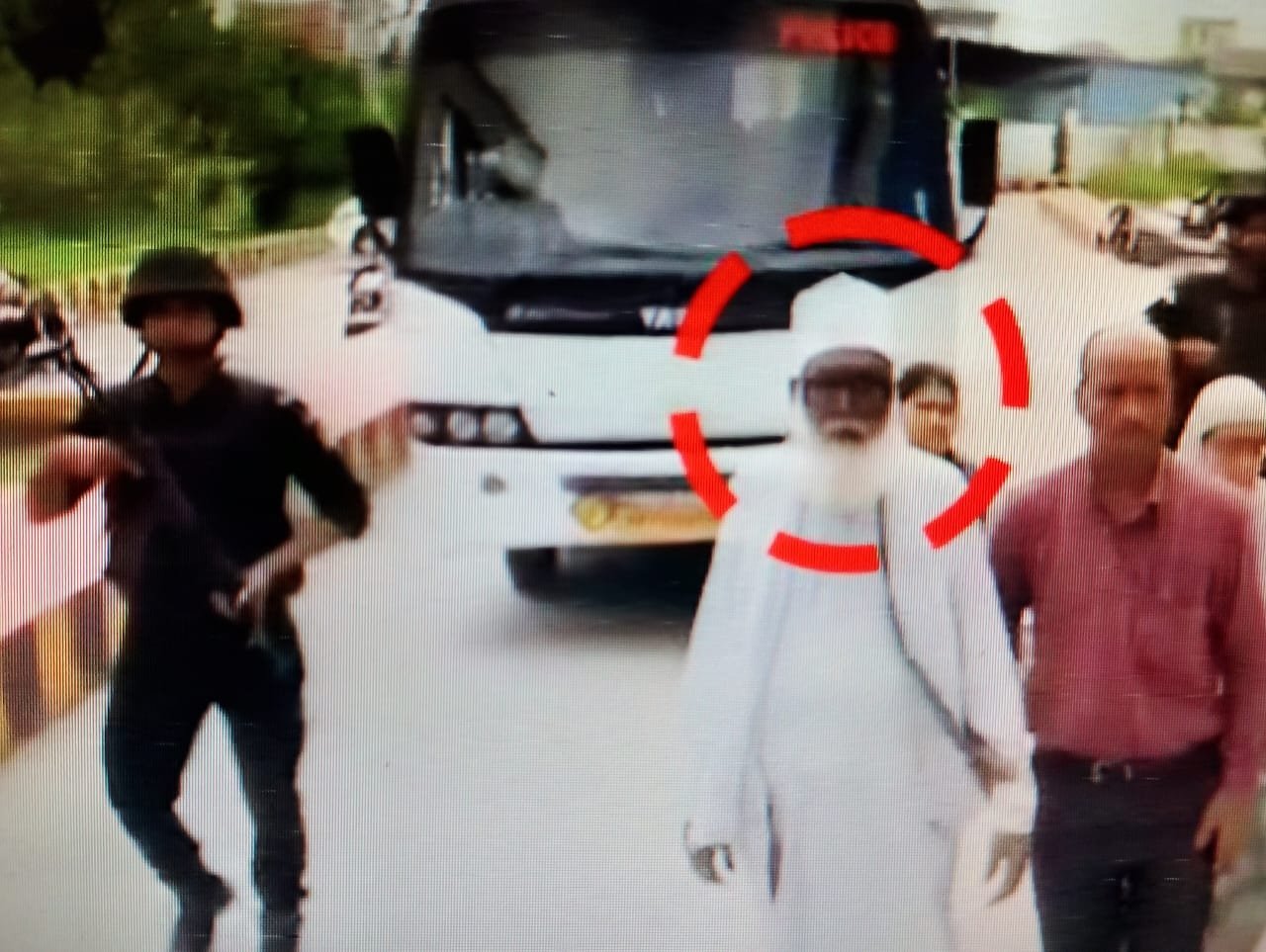
Contents
Uttar Pradesh | 11 July 2025
By Credent TV News Desk
He walked with a staff, wore a long beard, and people in the village folded their hands in reverence at his feet. But behind that saintly image was a man running one of the darkest religious conversion syndicates India has ever seen. His name: Changur Baba. Real name: Jalaluddin. Age: 70. And his list of crimes? Long enough to outlive his age.
A Full-Fledged Conversion Industry
Recent investigations by Uttar Pradesh STF and ATS have uncovered a deeply disturbing reality. This so-called baba wasn’t just chanting prayers — he was masterminding an elaborate system of trapping women and girls into forced religious conversions.
His targets? Minor girls, widows, and poor women — the most vulnerable in society.
His method? Manipulation, emotional blackmail, fake promises of marriage, and when that didn’t work — threats and money.
What’s even more shocking — Baba had a conversion training manual. A complete system of how to trap girls from different religions: what to say, when to act affectionate, and when to threaten.
Fixed rates were decided for each conversion. This wasn’t faith — it was business.
Crores in Swiss Bank Accounts
If you thought this racket was operating on a small scale, think again. Investigators discovered over 40 bank accounts linked to Changur Baba, including several in Switzerland. The total transactions? A staggering ₹106 crore (over $12 million).
Where did the money come from? Sharjah, Dubai, and other Islamic countries, according to the STF.
This was not just a religious racket — it was internationally funded and systematically operated.
Arrested — But the Net Is Wider
On 5th July, STF arrested Changur Baba along with his close aide, Neetu alias Nasreen, from a hotel in Lucknow. During interrogation, it was revealed that the network stretched far — from Mumbai to Dubai.
Now, the Enforcement Directorate (ED) has joined the investigation. A money laundering probe is underway, and authorities are preparing to seize assets and properties linked to the illegal trust and conversions.
A Saint No More
Changur Baba may be behind bars now, but the emotional scars he left on thousands of innocent women can’t be counted in case files or spreadsheets.
He exploited faith to deceive, used trust to destroy, and wore religion as a mask for crime.
As one STF officer said:
“He wasn’t a saint in White. He was a predator in disguise.”
The villagers who once bowed before him now raise questions. How did this go on for so long? And how many more like him are out there?
There’s an old saying:
“When fake saints rise, truth becomes the biggest casualty.”
But this time, the law has spoken. And Baba’s mask has finally fallen.
Bihar
Lalu Yadav Faces Major Setback: HC Accepts CBI’s Plea to Increase Sentence in Fodder Scam Case
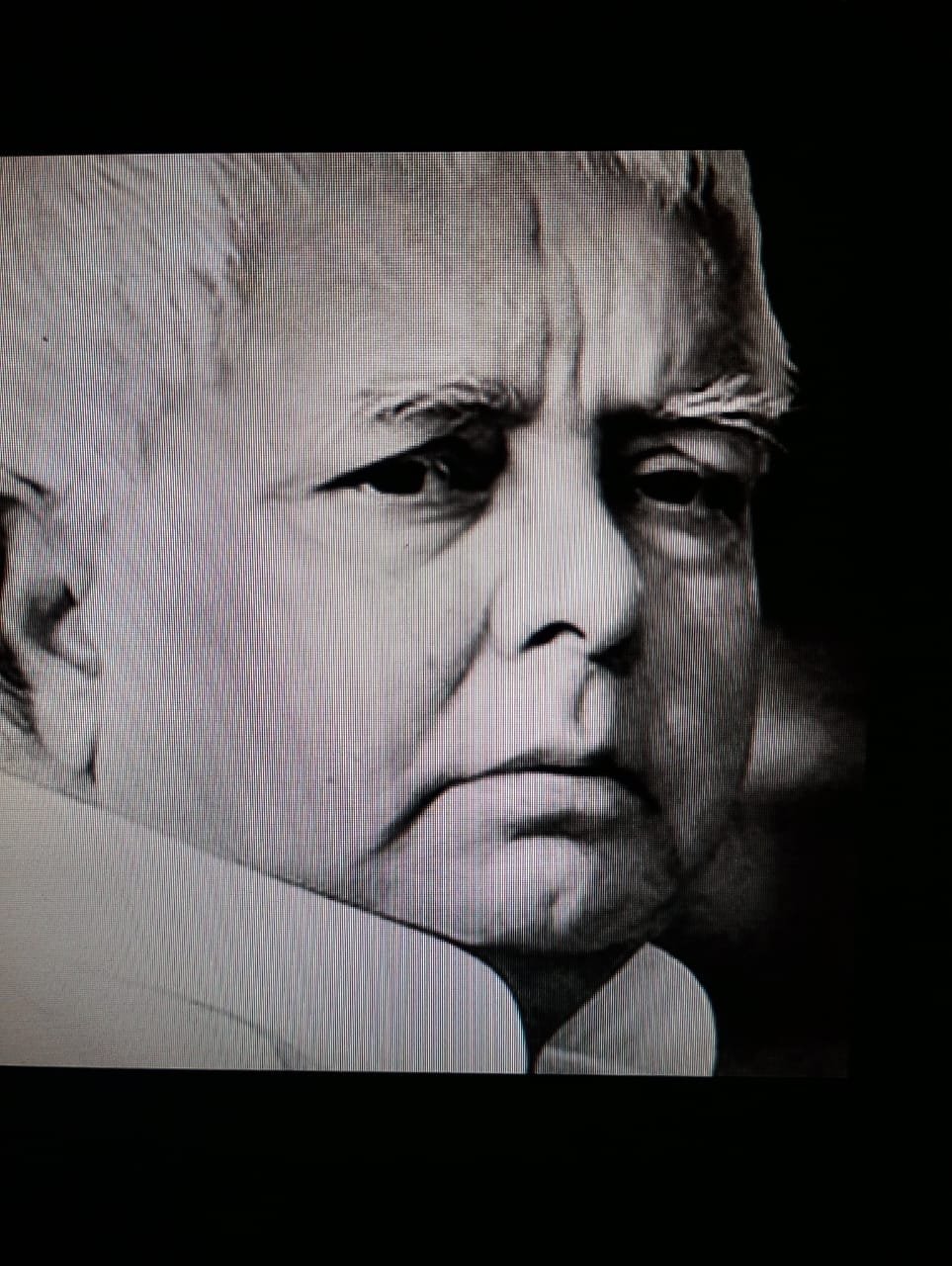
Contents
By Credent TV News Desk
Patna | July 9, 2025
In a major blow to RJD chief and former Bihar Chief Minister Lalu Prasad Yadav, the High Court has accepted the Central Bureau of Investigation’s (CBI) plea to enhance his sentence in the infamous fodder scam case. This ruling could extend Lalu’s prison term significantly.
What’s the case all about?
The fodder scam, which shook the country in the 1990s, involved large-scale embezzlement of government funds in the name of procuring fodder for livestock in Bihar. Crores of rupees were siphoned off using fake bills and fictitious expenses. Lalu Yadav has already been convicted in multiple related cases and has served time in jail. However, this latest development revolves around increasing the length of his sentence.
What did the CBI argue?
The CBI had approached the High Court stating that the lower court had awarded Lalu a lenient sentence considering the seriousness of the crime. According to the agency, a harsher punishment would be more appropriate given the scale of corruption and betrayal of public trust. Agreeing with this argument, the High Court has now permitted an increase in Lalu Yadav’s sentence.
How did Lalu Yadav and his party react?
The RJD camp has gone into damage control mode. Senior leaders have called this move a “political conspiracy” and declared their intent to challenge the verdict in the Supreme Court. While Lalu Yadav himself has not issued a public statement, sources close to him reveal that he is deeply disappointed and disturbed by the judgment.
What’s next?
This ruling could reshape the political landscape for RJD. The spotlight is now on Tejashwi Yadav—will he now fully take over the party’s reins? Meanwhile, rival parties like BJP and JD(U) have hailed the verdict as a strong stance against corruption and a win for accountability.
Expert Take:
The High Court’s decision is being seen as a symbolic moment in the fight against high-level corruption. For a veteran leader like Lalu Yadav to face an extended sentence sends a powerful message: no matter how old the case, justice does not forget.
India
Indian Air Force Jaguar Fighter Jet Crashes in Rajasthan’s Churu: Pilot and Co-Pilot Killed, Wreckage Scattered Across Village

A heart-wrenching tragedy unfolded on Tuesday morning in Rajasthan’s Churu district, where an Indian Air Force Jaguar fighter jet crashed during a routine sortie, claiming the lives of both the pilot and co-pilot. The crash was so severe that the aircraft broke into pieces, scattering debris over a large area and leaving behind the mutilated remains of the officers across different parts of the village.
The incident took place in a quiet rural area of Churu, where the calm of the morning was shattered by a loud explosion. Villagers rushed out of their homes to find smoke billowing from the wreckage scattered across their fields and streets. The blast was followed by chaos as flames engulfed parts of the crash site, and panic gripped the locals.
According to eyewitnesses, the jet appeared to be flying unusually low and suddenly caught fire mid-air. Moments later, it crashed into the ground and exploded with a thunderous blast, sending plumes of smoke and a pungent smell of burning metal into the air. The debris rained down on homes, roads, and farmlands, turning the entire area into a scene of devastation.
Upon receiving the alert, teams from the Indian Air Force and local police rushed to the spot and began rescue and recovery operations. The crash site has since been sealed off, and efforts are underway to collect and examine the wreckage.
Preliminary reports suggest that the Jaguar was on a routine training mission when it encountered a technical malfunction that led to the crash. The Indian Air Force has launched an official investigation to determine the exact cause.
This incident is not just a tragic loss for the Indian Air Force but a moment of deep sorrow for the entire nation. Tributes have been pouring in for the brave officers who lost their lives in the line of duty. Meanwhile, the village where the crash occurred remains gripped by fear and shock.
Credent TV pays heartfelt homage to the fallen heroes of the sky.
India
Bharat Bandh Today: Why Are 250 Million Workers on Strike? What’s Open, What’s Shut – Here’s Everything You Need to Know
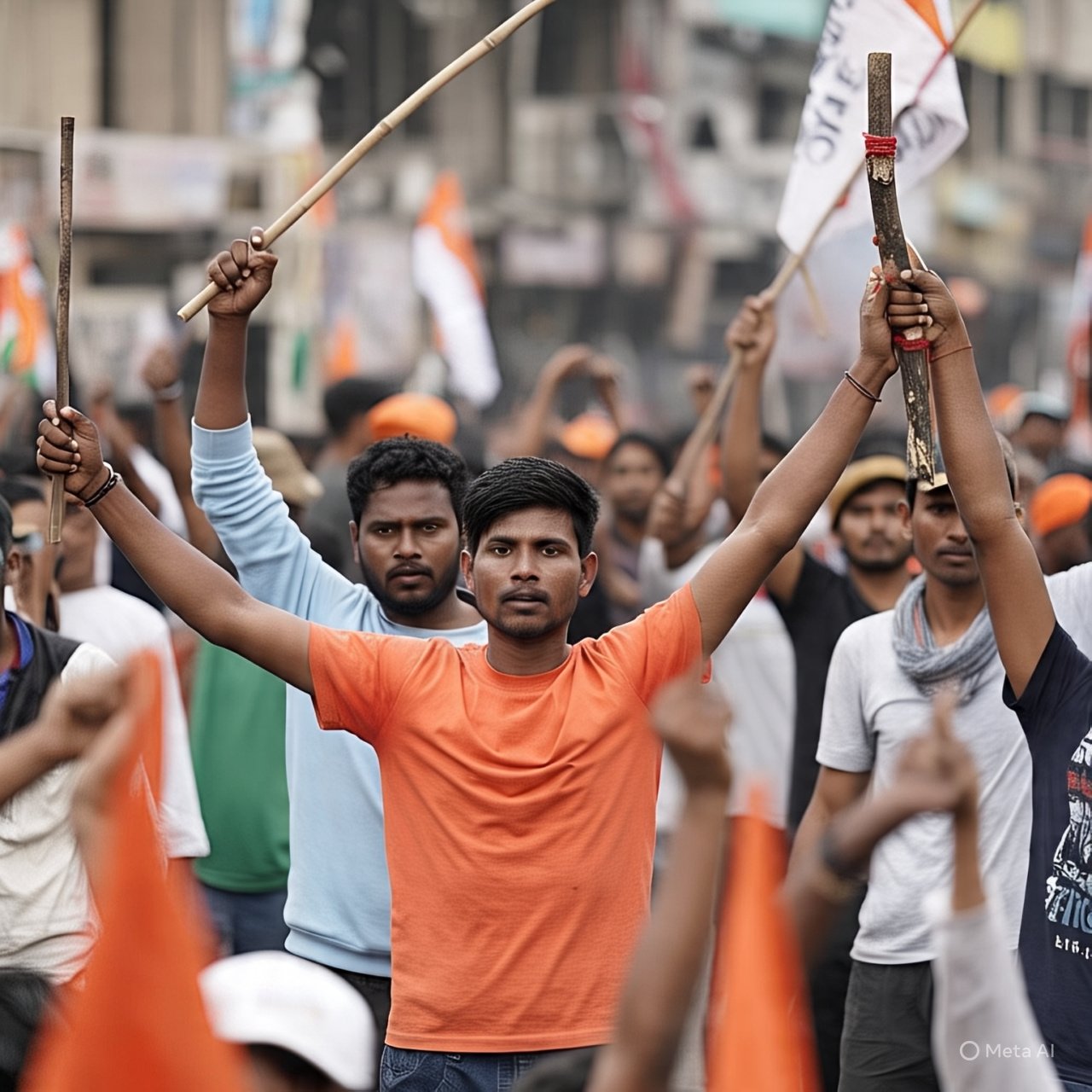
Contents
New Delhi | July 9, 2025
India woke up to a storm of slogans and silent streets today. With banners in hand and voices raised in unison, over 250 million workers and employees have joined a massive nationwide strike – the Bharat Bandh – protesting what they call anti-worker, anti-farmer, and pro-corporate policies of the central government.
This isn’t a symbolic protest. It’s being led by a powerful front of 10 central trade unions, supported by farmer organizations and rural labor unions. Together, they are sending one clear message – “Our voices matter.”
Why This Strike?
The protesting unions have raised serious allegations against the government:
- They say labor rights are being compromised.
- They accuse the government of aggressive privatization.
- They argue corporate interests are being prioritized over the common worker.
- They’re demanding protection of jobs, pensions, and public sector institutions.
Simply put, this bandh is not just about wages – it’s about respect, dignity, and survival.
Services Hit by the Strike
Several essential services across the country have felt the impact. Banking operations have slowed down due to staff participation in the strike. Postal services in many regions are suspended. In some states, public transport has been disrupted, leading to traffic snarls. Industries like coal, steel, and construction are reporting work stoppages. Even the power sector may experience temporary outages due to absentee staff.
What Remains Open?
Despite the unrest, hospitals and emergency services continue to function normally. Most schools, colleges, and private offices are open. Railways are largely operational, though some delays have been reported due to protests in certain regions. Markets and shops are also open in most cities, as trade unions and retail bodies have not actively joined the bandh.
Where the Impact Is Strongest
States like Kerala, West Bengal, Tamil Nadu, and Jharkhand have seen major protests, rallies, and transport blockades. In Gujarat, Maharashtra, and Punjab, the effect is more limited but still visible in sectors like banking and heavy industry.
Voices from the Ground
“We are not asking for favors. We are demanding what is rightfully ours – fair wages, job security, and dignity,” said a worker protesting in Ranchi.
“This bandh is a message to the government – listen before it’s too late,” said a union leader from Kolkata.
What Should You Do Today?
If you need to visit a government office, bank, or post office – call ahead to confirm. If you’re commuting, keep track of traffic and avoid areas with active protests. Stock up on essentials if you’re in a region where services are being disrupted.
The Bottom Line
Bharat Bandh 2025 is more than a strike – it’s a reminder that the people who build this nation also have the power to stop it when ignored. The coming days will reveal whether this united voice of workers leads to policy change, but for today, one thing is certain – the streets have spoken.

 Education1 month ago
Education1 month agoKota ICICI Bank Staffer Swindles ₹4.5 Crore, Gambles It All on Stock Market

 Education2 weeks ago
Education2 weeks ago11 Powerful Reasons Why DAV International Yoga Day Jaipur Uplifted Spirits!

 Bollywood1 month ago
Bollywood1 month agoHousefull 5 Movie Review: Akshay Kumar, Riteish Deshmukh Bring Laughter and Twists in Bollywood’s Biggest Comedy Franchise

 Cricket1 month ago
Cricket1 month agoBengaluru Chinnaswamy Stadium Stampede: 11 Dead, 33 Injured in RCB Victory Parade Chaos

 Education2 weeks ago
Education2 weeks ago7 Inspiring Highlights of DAV Foundation Day Jaipur Celebration – Amazing Vedic Legacy Revealed!

 Education2 weeks ago
Education2 weeks agoEmpowering Educators: A Three-Day Learning Journey at DAV Centenary Public School, Jaipur

 Credent TV2 weeks ago
Credent TV2 weeks agoVIBGYOR Summer Camp Ends on a High at DAV Centenary Public School, Jaipur

 Election3 days ago
Election3 days agoDAV Centenary Public School, Vaishali Nagar, Jaipur Event Report: Talent Hunt Show
































